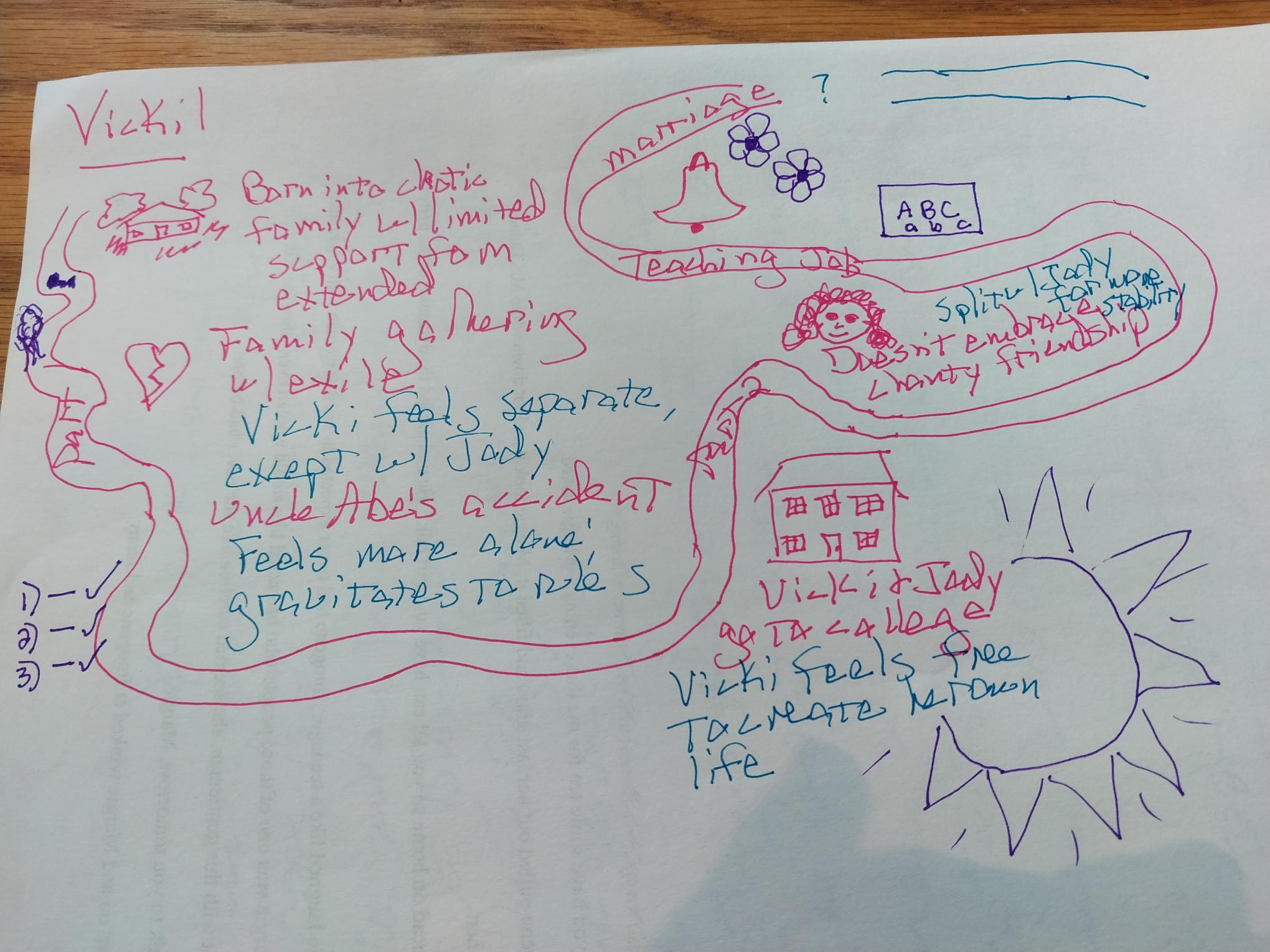Character Development: Creating a character map and stepping off it
While working on the first manuscript that I hoped would become my debut novel, I took a class at The Carnegie Center for Literacy and Learning in Lexington. The teacher, Lisa Koger, author of Farlanburg Stories, read my opening chapter about a teenage girl who leaves her home with an aunt and uncle.
“Where’s her mother?” Koger asked.
“In a hospital for the mentally ill,” I replied.
“Then your assignment is to visit Kentucky State Hospital.”
Koger immediately recognized that the relationship the main character had with her mother would be a motivating force in the story. To know my character better, I needed to explore her relationship with her mother, even if the mother is never physically in the story.
That was one of my early lessons in character development. Since then, I’ve tried all sorts of techniques to get to know characters so they will show up in my stories as fully realized people rather than caricatures.
 My current favorite approach utilizes words and visuals. I create a physical, character map that’s like a poster I can refer to and add to as I work on a manuscript. I start at the beginning of the character’s life. What symbolizes their early years? Who’s in the family? Where were they geographically? What from that time of their life helped form the person they are? I use words and pictures (for me, that’s often stick people) to illustrate the map. I choose colors to express a mood. I might write a few paragraphs (on the back of the map or in an accompanying notebook) to go along with it.
My current favorite approach utilizes words and visuals. I create a physical, character map that’s like a poster I can refer to and add to as I work on a manuscript. I start at the beginning of the character’s life. What symbolizes their early years? Who’s in the family? Where were they geographically? What from that time of their life helped form the person they are? I use words and pictures (for me, that’s often stick people) to illustrate the map. I choose colors to express a mood. I might write a few paragraphs (on the back of the map or in an accompanying notebook) to go along with it.
Then I move to the next defining moment in this character’s life. As I do that, I wonder what kind of path did they take to the next stage? A road, sidewalk, a stepping-stone path through tall grass? Did they walk, ride a bicycle, row a boat? Who was with them? Who do they wish was with them? What on the path made them stumble?
You might not know all the answers to the questions you want to explore when you begin your map, just like you don’t know every twist and turn in your story. You can be vague in some spots and use a question mark until you are ready to return to that section with more clarity.
It’s also possible that you might want to start somewhere other than the beginning of the character’s life. You might begin with the inciting incident of your story, digging into how the character reacts to that incident. Then you can work backwards or forwards to further explore what led to that reaction or the actions he or she took afterwards.
One of the beautiful things about having a character map is that if I get lost in a story and I’m not sure where it should go next, I can consult the map for what is influencing my character at this point on her journey. That might inspire me to add another stop or a side road on the map. It might also tell me I need to map out another character’s journey.
And if that doesn’t work, I step off the map to put myself in a situation that can help me deepen my understanding of the character. That visit to Kentucky State Hospital showed me the value of in-person research. It also inspired me to write a short story that became the opening of the novel. Although the novel hasn’t been published, the short story reached thousands of readers and became an award winner (“Shadow Dancing without My Mother,” St. Anthony Messenger Magazine, March 2000, Best Short Story, Catholic Press Association, 2001.)
When you want to get to know your characters better, map it out, on paper or with your own two feet.
 Beth Dotson Brown is the author of Rooted in Sunrise, a novel about facing change at midlife in the aftermath of a natural disaster. She’s also an award-winning feature writer, short story author and essayist. Beth is the author of Yes! I Am Catholic and a contributor to A Cup of Comfort for Breast Cancer Survivors and Scenes from the Common Wealth) . Heartland Plays published her collection of one-act plays. Her short stories have been published in literary magazines and aired on the BBC World Service Short Story Programme. Beth lives in Lancaster, Kentucky. You can reach her at www.bethdotsonbrown.com
Beth Dotson Brown is the author of Rooted in Sunrise, a novel about facing change at midlife in the aftermath of a natural disaster. She’s also an award-winning feature writer, short story author and essayist. Beth is the author of Yes! I Am Catholic and a contributor to A Cup of Comfort for Breast Cancer Survivors and Scenes from the Common Wealth) . Heartland Plays published her collection of one-act plays. Her short stories have been published in literary magazines and aired on the BBC World Service Short Story Programme. Beth lives in Lancaster, Kentucky. You can reach her at www.bethdotsonbrown.com
